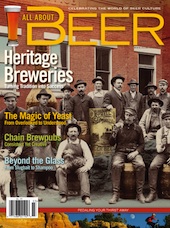How to Select the Samples
It has little to do with culinary expertise, because there’s almost nothing to it. Most of the beers we use are dark and heavy. In dark beers, the hops are more buffered by the malt, resulting in what might be called a mellower and maltier taste profile. This type of beer loves chocolate. Light or paler beers do work, but one must take care about the hop balance of the beer. Hoppy beers seem the least companionable with chocolate; which might explain why low-hopped wheat beers and Belgian brews fit so well.
With the exception of hoppy pale brews, no beer has failed in a union with one or another chocolate pleasure, although mint chocolate is highly problematic. Dark bittersweet chocolate seems a tad more compatible with beer than milk chocolate. We found that chocolate chip cookies, peanut butter cups, and chocolate brownies are prime rib for the beer and chocolate aficionado. Ice cream is not to be shunned, either.
The only problem I have ever encountered in matching beer with chocolate is that one needs to wipe the lips carefully between bites and sips. Chocolate on the glass is very destructive of the beers head.
About Chocolate
The Mayans and the Aztecs made a drink they called xocoatl, which sounds like the famous Aztec god of death and destruction. The Spaniards brought it to Europe in about 1519, but they kept it secret for almost 100 years before it was smuggled to Italy (1606), France (1615), and on to England, Denmark, Switzerland and Austria. Madam DuBarry gave it to her suitors, Casanova used it as a romantic elixir; but it wasn’t until it got to this country that people were able to pronounce it correctly: CHOCK-lit.
The cacao plant (Theobroma cacao), more a shrub than a tree, grows in tropical zones 20 degrees north or south of the equator. Most of our chocolate originates in Java, Columbia and Ghana, although now it grows in Hawaii, too.
The beans are harvested in pods, then are separated and dried in the sun for about 10 days. When dry, they are roasted and the shells are separated from the meat. These “nibs” are crushed and liquefied to form the chocolate “mass” or liquor.
Countries of origin make a difference in flavor, too (i.e., Indonesia and Madagascar, to name two contrasting sources). Other notable differences arise from the variable quantities of cocoa used in a particular blend.











